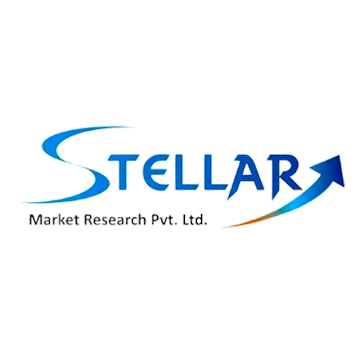Connected Building Market Overview
The Connected Building Market was valued at USD 99.01 billion in 2023 and is projected to grow at a compound annual growth rate (CAGR) of 10.9% from 2024 to 2030. This rapid growth is driven by the increasing adoption of advanced technologies such as IoT, AI, and automation in building management, and the rising demand for energy-efficient, sustainable, and smart infrastructure.
Market Scope
The Connected Building Market is defined as a system where building functions such as lighting, HVAC (heating, ventilation, and air conditioning), security, and energy management are interconnected through sensors, controllers, and advanced communication technologies. These systems allow for real-time data collection, management, and analysis, leading to optimized performance, reduced energy consumption, and enhanced security.
Key components of the market include:
- Solutions: Building infrastructure management, security & emergency management, and energy management.
- Services: Professional services, including consulting, system integration, and maintenance.
The market is segmented by application, which includes both residential and commercial buildings. Notably, the commercial segment is expected to dominate due to growing investments in energy-efficient commercial real estate and smart city initiatives.
Curious to peek inside? Grab your sample copy of this report now:https://www.stellarmr.com/report/req_sample/Connected-Building-Market/686
Market Drivers
- Energy Efficiency Concerns: The need to address global energy consumption is a major driver of the connected building market. According to IBM’s research, buildings consume 50% of the world’s energy and contribute to 36% of carbon emissions. Smart building technologies that optimize energy usage can reduce consumption and maintenance costs, making them a critical solution for reducing overall environmental impact.
- Internet of Things (IoT) Adoption: IoT technology enables the integration of various building systems into a single network, improving operational efficiency. IoT-enabled Building Management Systems (BMS) allow for the real-time control of HVAC systems, lighting, and security. This integration helps reduce operational costs and improve tenant satisfaction, which is particularly important in commercial buildings.
- Smart City Initiatives: As governments worldwide increasingly invest in smart city projects, the adoption of connected buildings is expected to surge. These buildings play a pivotal role in reducing the carbon footprint and enhancing the sustainability of urban environments.
- Security and Safety: With the rise in cyber threats and the need for enhanced building security, connected buildings provide robust solutions for surveillance, access control, and emergency management systems, ensuring the safety of occupants and assets.
Market Trends
- Sustainability and Green Construction: With increasing regulatory pressures and environmental concerns, there is a rising demand for sustainable building practices. Connected buildings that incorporate smart lighting, energy-efficient HVAC systems, and automated water management contribute significantly to green building certifications such as LEED (Leadership in Energy and Environmental Design).
- 5G Integration: The advent of 5G technology is expected to enhance the performance of connected buildings, enabling faster data transmission and more efficient real-time control over building systems.
- AI and Automation: Artificial intelligence is being integrated into building management systems to predict maintenance needs, optimize energy consumption, and enhance security protocols. The use of AI is expected to become a standard in future smart building solutions.
Segmentation
By Component
- Solutions:
- Building Infrastructure Management: Focused on systems like elevators, parking management, and water management.
- Security & Emergency Management: Includes surveillance, access control, and safety systems.
- Energy Management: Increasing demand due to stringent regulations and the push for energy-efficient buildings.
- Services:
- Professional Services: Such as consulting, integration, and maintenance, essential for the deployment and upkeep of smart building systems.
By Application
- Commercial:
- This segment is expected to dominate the market, driven by the adoption of connected technologies in healthcare, hotels, corporate offices, and retail spaces. The demand for efficient building management and energy savings in these areas is strong.
- Residential:
- While residential adoption is growing, it is still smaller in comparison to commercial buildings. However, as technologies become more accessible and affordable, this segment is expected to expand.
Curious to peek inside? Grab your sample copy of this report now:https://www.stellarmr.com/report/req_sample/Connected-Building-Market/686
Regional Analysis
- North America: North America holds the largest market share, with the United States and Canada leading in the development of smart building technologies. The region’s emphasis on sustainability and energy efficiency is a key factor driving market growth.
- Asia Pacific: The Asia Pacific region is poised to grow the fastest, driven by rapid urbanization, increased construction activities, and technological advancements in countries like China, India, and Japan.
- Europe: Europe is also a major market, with a strong focus on sustainability and compliance with strict energy regulations. Countries like Germany, France, and the UK are leading the way in adopting connected building technologies.
- Middle East and Africa: The Middle East, especially countries like UAE and Saudi Arabia, is investing heavily in smart city infrastructure, which includes connected buildings.
- South America: Brazil and Argentina are expected to witness moderate growth, particularly in commercial real estate development.
Key Players
The Connected Building Market is highly competitive, with several key players establishing a global footprint. Prominent companies include:
- Honeywell International Inc.
- Siemens AG
- ABB Ltd.
- Schneider Electric SE
- IBM Corporations
- Huawei Technologies Co. Ltd.
- Intel Corporations
- Hitachi Ltd.
- Johnson Controls International PLC
- PTC Inc.
- Cisco Systems
Key Questions Answered
- What is the projected growth of the Connected Building Market from 2024 to 2030?
- What are the major factors driving the adoption of connected buildings?
- Which component is expected to dominate the market?
- How is the IoT revolutionizing building management systems?
- Which regions are experiencing the fastest growth in connected buildings?
Conclusion
The Connected Building Market is set for significant expansion, driven by technological advancements and growing demand for energy-efficient, sustainable infrastructure. As more buildings incorporate smart technologies, the market will see increased adoption, particularly in commercial spaces and regions like North America and Asia Pacific. Key players are focusing on innovation and strategic partnerships to capture growth opportunities in this dynamic market.
To access more details regarding this research, visit the following webpage:https://www.stellarmr.com/report/Connected-Building-Market/686
Key Offerings:
- Past Market Size and Competitive Landscape (2018 to 2022)
- Past Pricing and price curve by region (2018 to 2022)
- Market Size, Share, Size & Forecast by Different Segment | 2024-2030
- Market Dynamics – Growth Drivers, Restraints, Opportunities, and Key Trends by Region
- Market Segmentation – A detailed analysis by segment with their sub-segments and Region
- Competitive Landscape – Profiles of selected key players by region from a strategic perspective
- Competitive landscape – Market Leaders, Market Followers, Regional player
- Competitive benchmarking of key players by region
- PESTLE Analysis
- PORTER’s analysis
- Value chain and supply chain analysis
- Legal Aspects of Business by Region
- Lucrative business opportunities with SWOT analysis
- Recommendations
For More Information:
Fox Nuts Market https://www.stellarmr.com/report/Fox-Nuts-Market/1105
Seaweed Snack Market https://www.stellarmr.com/report/Seaweed-Snack-Market/1106
FMCG Packaging Market https://www.stellarmr.com/report/FMCG-Packaging-Market/1154
Functional Food Ingredients Market https://www.stellarmr.com/report/Functional-Food-Ingredients-Market/1156
Green Coffee Market https://www.stellarmr.com/report/Green-Coffee-Market/1165
About Stellar Market Research:
Stellar Market Research is a multifaceted market research and consulting company with professionals from several industries. Some of the industries we cover include medical devices, pharmaceutical manufacturers, science and engineering, electronic components, industrial equipment, technology and communication, cars and automobiles, chemical products and substances, general merchandise, beverages, personal care, and automated systems. To mention a few, we provide market-verified industry estimations, technical trend analysis, crucial market research, strategic advice, competition analysis, production and demand analysis, and client impact studies.
Contact Stellar Market Research:
S.no.8, h.no. 4-8 Pl.7/4, Kothrud,
Pinnac Memories Fl. No. 3, Kothrud, Pune,
Pune, Maharashtra, 411029




